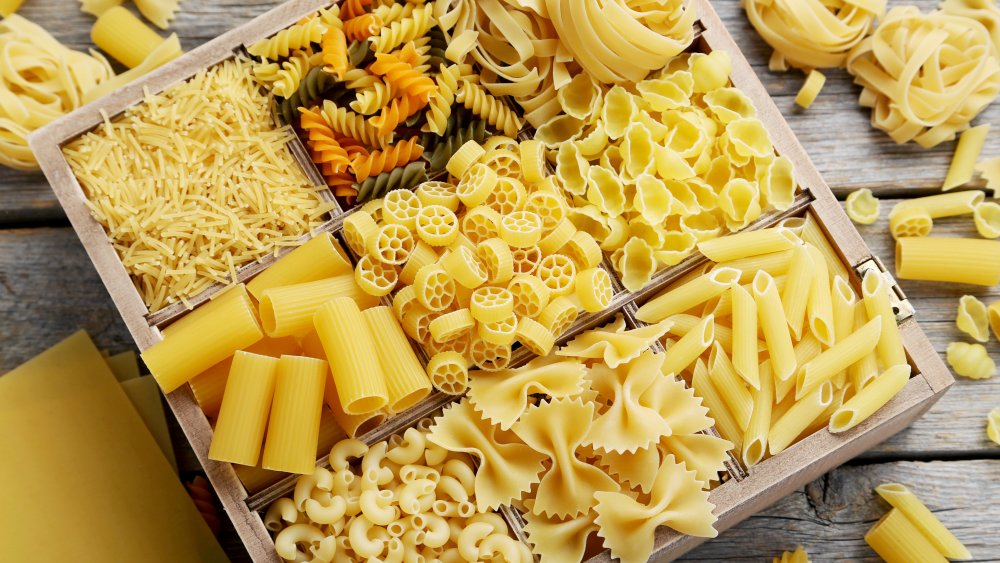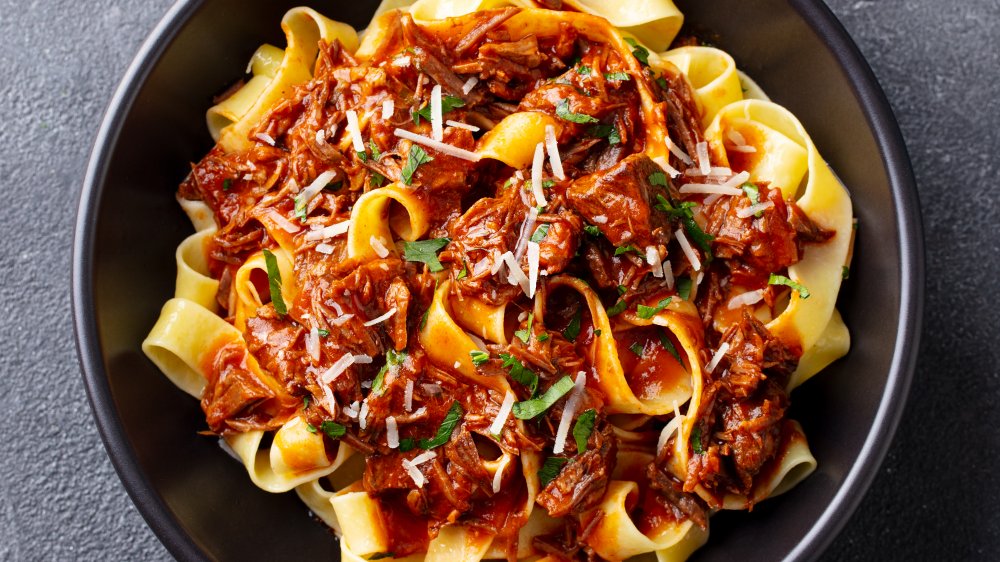The Real Reason Pasta Shapes Taste Different
Pasta dishes such as spaghetti, and creamy, cheesy mac and cheese are two of America's most loved comfort foods. According to the Pasta Fits, the U.S. collectively consumes 5.95 billion pounds of pasta per year, with 86 percent of survey respondents reporting that they eat pasta at least once per week. Consumers love pasta so much that even the gluten-free pasta market is expected to reach $1.2 billion by 2025, according to Allied Market Research.
Whether you're trying out a quick pasta recipe or an old favorite, most cooks attempt to match the pasta shapes to the sauce. But, does it really make a difference in the taste? If you've ever used marinara on elbow noodles, or drizzled Velveeta over vermicelli, you probably noticed that the recipe didn't taste quite the same. But, why? Surprisingly, it's not the shape of the noodle that determines its taste, but something else you may not have realized.
The real reason why spaghetti noodles tastes different than elbow noodles
According to Eat This, Not That!, the shape of individual pasta is not what makes it taste different. However, if you place a piece of cooked dry pasta next to a cooked piece of fresh pasta, the taste will differ. This is because the fresh pasta contains eggs. Other noodles, such as soba, rice, and egg, will also taste different, because of the ingredients that are used in their creation.
Sauces, as we alluded to above, also play a big part in a pasta's taste. According to Food Network, long noodles, such as spaghetti, pair best with thinner sauces and olive oils. Short, tubular pasta, like penne, is perfect for gripping sticky meat and pesto sauces. And, finally, short, shapely pasta, such as bow tie and rotini, are great for holding fast to thick, hearty sauces that carry meat and vegetables. So, the next time you're in the pasta aisle facing dozens of pasta choices, stop to consider your sauce, before you settle on your pasta shape.

